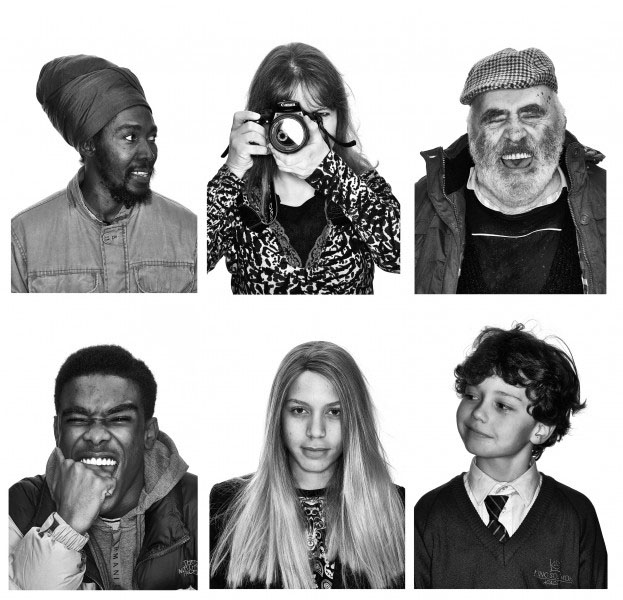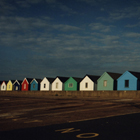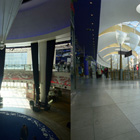
Responding to the current regeneration plans for the Church Street area in Westminster, Emma Blau invited the local community to be photographed in her pop-up photography studio and show that they are an integral part of their neighbourhood’s past, present and future as it undergoes transformation. In total, she photographed 400 people. A long-term resident of the area herself, Blau utilised regeneration building site hoardings to create this arresting public art exhibition featuring her large-scale, black and white photographic portraits.
Face Forward is a series of visual interventions in the public realm which aim to focus on the most important group affected by the regeneration taking place in Church Street: local people, creating an environment where those who live, work and study there visually occupy their own streets in an immediate way and have a crucial visible presence in the changing townscape of their neighbourhood.
Face Forward is a series of visual interventions in the public realm which aim to focus on the most important group affected by the regeneration taking place in Church Street: local people, creating an environment where those who live, work and study there visually occupy their own streets in an immediate way and have a crucial visible presence in the changing townscape of their neighbourhood.

In our increasingly image saturated, visual world we make sense of ourselves and others through non-verbal communication. The spoken word in fact accounts for very little of how we define ourselves and relate socially with those around us. We instinctively interpret thoughts conveyed through facial expressions, body language and inflections of the voice. This body of work explores Blau’s fascination with the way in which many of those diagnosed with Asperger's syndrome and high functioning autism do not necessarily have this instinct and therefore have great difficulty with social communication, particularly in a visual sense.
When taking peoples’ portraits a photographer is essentially attempting to capture an aspect of someone's personality through a still image of their face.The intimate process of taking a photographic portrait, necessitates certain questions from the photographer and the eventual audience: who is this person, what are they communicating about themselves to us, what conclusions can we draw from the information on display, how can we analyse the subject? Ultimately how do we read the person in the photograph?
If the sitter does not instinctively know what their facial expressions are communicating to the photographer and ultimately the audience of the photographs being produced, then how do we define them?
This series is an attempt to question whether portrait photography can indeed capture the “essence” of a person. At the same time the work invites us to question our assumptions about people based on visual signs, indeed outward appearances.
When taking peoples’ portraits a photographer is essentially attempting to capture an aspect of someone's personality through a still image of their face.The intimate process of taking a photographic portrait, necessitates certain questions from the photographer and the eventual audience: who is this person, what are they communicating about themselves to us, what conclusions can we draw from the information on display, how can we analyse the subject? Ultimately how do we read the person in the photograph?
If the sitter does not instinctively know what their facial expressions are communicating to the photographer and ultimately the audience of the photographs being produced, then how do we define them?
This series is an attempt to question whether portrait photography can indeed capture the “essence” of a person. At the same time the work invites us to question our assumptions about people based on visual signs, indeed outward appearances.

